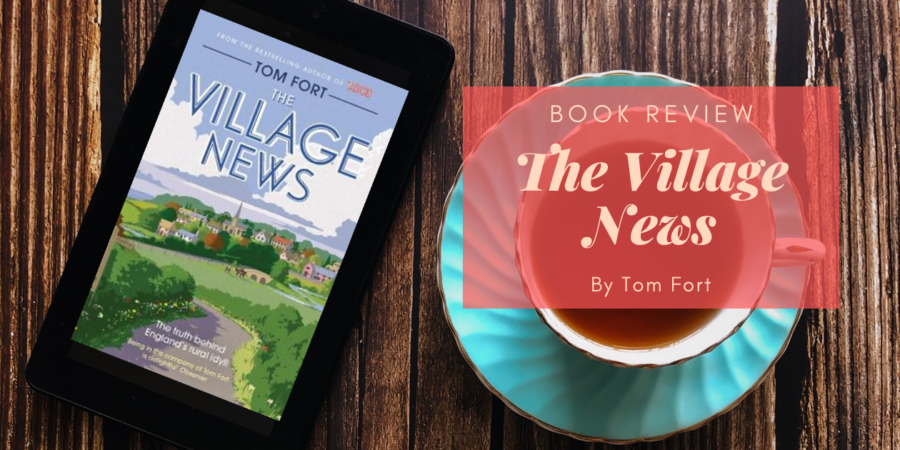What makes the English village so unique? Why does have have such a romanticised image in the minds of so many people (including me, although I’m not even a citizen of the UK)? And is it really dead?
In The Village News, Tom Fort visits twenty-two villages in England and declares that the village isn’t dead, it’s just adapted to modern times. He goes back to his childhood village of Twyford, Berkshire, he visits picturesque villages such as Bibury (in Cotswold) and Troutbeck (in Lake District). He looks at the importance of sporting areas, whether you can plan a village, how writers have affected villages, and “the curse of the quaint”, all the while bringing us through the histories of the various villages that he visits. We even get to hear about Miss Read and her Fairacre series!
(Note to self: Cottage on the Green by Rowland Parker sounds interesting too, though it’s apparently long out of stock)
Speaking of Miss Read, I’ve got to disagree with Fort that she doesn’t deal with the darker side of life. She does talk about darker issues such as domestic abuse (the Coggs family), about tumultuous relationships and adultery, and even the impact of unstable family lives on children. She has a light hand with these, but she doesn’t avoid the topic entirely.
I liked the point that what makes a village isn’t a certain way of life, such as having been living there for several generations, or having to be living off the land, or using outdoor toilets and old-fashioned lamps. A village is a community of people and if they remain a community that’s tied together, rather than a group of people that live in the same place, then the village lives even if the lifestyle of the villagers bear no resemblance to those that lived there centuries ago.
Overall, this was a lovely and insightful book about the history of the English village and how it is adapting to the modern world. I hope someone has written something similar about villages around the world because I would love to read about how the rural community in various countries are adapting (or not) to the changes in the past few decades.

Jeez. I was wondering why I haven’t seen any of your posts on my dash lately … to discover that I had hit the “Unfollow” button at some point. Ugh.
More importantly:
1) I remain in awe of teal teacups. They’re so lovely.
2) Great review! It looks like a really lovely read! — appropriately critical, while also being celebratory. (And a great cover!) This makes we want to book a walking holiday.
Teal teacups are so pretty! I wish I could find more (although I’ve also fallen in love with white + gold ones – wait till you see those!)
This was a good read and it made me want to go on a walking holiday too!
This does sound lovely. I now live in something that could count as a village … except here, in America, we call them “small towns” and they only go back a hundred or so years, not a thousand like in Britain. My boys and I have been studying the history of our region recently for school. Imagine my surprise to learn that the agricultural irrigation canal system in our area was a huge, impressive project done without machine power about 100 years ago. It’s like finding out that you’ve been living next to the Great Wall of China or something. OK, I exaggerate.
I agree that the salient feature of a village is the same families living in the same place for many generations. I’ve been in villages in Borneo where the lifestyle was very simple, but even they were not always in the same location the village had always been. Sometimes they had to move a village for different reasons.
To Kill A Mockingbird gives a pretty good description of village life in the American South in … what? The 1950s?
I loved To Kill a Mockingbird; it was such a powerful book!
The canal system in your village/small town does sound impressive! I wonder if there are any similar stories in Singapore (doubt so, we’re too young as a nation).
It would be interesting to read about villages around the world, I wonder how much they would have in common with one another.
Oh I bet there is similar stuff in S’pore, if it is anything like Indonesia and Malaysia in having impressive rice paddy canal systems in every village. 🙂 And my state is fairly young. Colonization only goes back to the 1850s or so. Positively recent compared to Europe. 🙂
“Villages around the world” would be a HUGE book to be sure! It would be the work of a lifetime! I imagine that they would differ greatly by culture, but that feuds and gossip would be constants. *sad smile*
We have no agriculture heritage, sadly! Singapore was mainly a small fishing port and then we became a British colony :p
Oh definitely! But I suspect that there’d be other good commonalities (neighbourly spirit, for instance) that might help people realise that we’re more alike than we think